Chmod Command In Linux
Please remember we removed the executable permission of chmod command only, but not other commands' permission.

Chmod command in linux. Linux file permission is a very important aspects in terms of security issues for the system administrator of Linux Operating System. Actually, chmod Command in Linux plays a greater role to keep all the files and directories of the system safe and secure so that no unauthorized person. The chmod command stands for change mode… and it’s used to limit access to resources….
Chmod command in Linux What is chmod?. Use the chmod command to change the read/write/execute permissions for the owner, group, and “everyone” for a file. Mykyta Dolmatov / Getty Images.
The first step is to create a new text file with .sh extension using the following command. File/Directory permission is either Read or Write or executable for either user or group or others. Linux chmod command is used to change the access permissions of files and directories.
Even, it ignores the symbolic links come across recursive directory traversal. Chmod -R 640 folder_name. The two versions above of the chmod command are the most common.
Use the chown command to change file owner and group information. Set the script to have executable permissions by using the chmod command, as shown below:. Owner, group, and everyone.
H ow do I use chmod and chown command under Linux / Unix operating systems?. In this tutorial, you will learn how to use chmod recursively and change file permission on Linux. Vijay Bhaskar 10/10/12 1 Comments Chmod (change mode) is one of the most frequently used commands in unix or linux operating system.
This command is used for changing the mode of access. $ chmod u+X *. Chmod stands for change mode.
15-05-19 In Unix-like operating systems, the chmod command is used to change the access mode of a file. The chmod system call cannot change their permissions. GeoIP information is simple to acquire from the Linux command line with the tool geoiplookup and the Maxmind dat files.
The expiration date for each domain is extracted from the response from whois by using grep to find lines that contain the string “Expiration,” and using awk to print the. We have already described the Linux file permissions. Linux File Permission :.
Following is a sample of ls -l command output. It takes the following syntax:. We use the chmod command to do this, and eventually to chmod has become an almost acceptable English verb, meaning the changing of the access mode of a file.
Recursive Preserve-Root Reference File. In Unix and Unix-like operating systems, chmod is the command and system call which is used to change the access permissions of file system objects (files and directories). By using this command, we can set the read, write, and execute permissions for all three of the permission groups (Owner, Group and Other) in Linux.
Chmod command is used to change access permission of files and directories in Linux operating systems.chmod stands for change mode.Access permissions specify whether a user account or group can read, write, or execute a given file and directory. We will explain the modes in more detail later in this article. The most obvious use would be around geofencing, i.e.
How to Change Groups of Files and Directories in Linux. This is not a problem since the permissions of symbolic links are never used. The command is relatively simple to use and involves using.
Here is an updated post and video on how to use Maxmind’s GeoLite2 database. This tutorial explains chmod command symbolic notation (r, w, x, a) and octal notation (0, 1, 2, 4) in detail with chmod command arguments and options. Chmod command in Linux with examples Last Updated:.
The chmod and chown commands are used to control access to files in UNIX and Linux systems. It’s usually used when installing and configuring various services and features in a Linux system. In Linux, who can do what to a file or directory is controlled through sets of permissions.
The general syntax to recursively change the file’s permissions is as follows:. $ chmod OPTIONS MODE filename Only the root user or a regular user with sudo privileges can change file or directory permissions. $ chmod a+r sample.txt Make a file readable and writable by the group and others.
Linux grants three different types of permissions — read, write, and execute — for three different scopes:. The command can accept one or more files and/or directories separated by space as arguments. In Linux/Unix like operating system, the chmod command is used to change the access mode of a file.
A plus (+) symbol adds a permission, and a minus (-) symbol removes a permission. However, for each symbolic link listed on the command line, chmod changes the permissions of the pointed-to file. The chmod command A normal consequence of applying strict file permissions, and sometimes a nuisance, is that access rights will need to be changed for all kinds of reasons.
How to use GeoLite2 on the command line. It is also used to change special mode flags. Chmod means ‘change mode’ and it changes file or directory mode bits (the way a file can be accessed).
The chmod command changes the access permissions of files and folders. Chmod Command in Linux Linux File Permission Introduction to Linux File Permission. The chmod command allows you to change the permissions of files using symbolic or numeric mode.
Here, I have given 7 methods. The chown command stands for “change owner”, and allows changing the owner of a given file or folder, which can. One of the most used option for chmod is +x which stands for execution rights.
There are three sets of permissions. To make a file executable, you can use the command “chmod +x numbers.py” in this case. It also allows to change the file permission recursively to configure multiple files and sub-directories using a single command.
You can read chmod u+r as "user plus read," as it gives the user read permission. Every file in the Linux / macOS Operating Systems (and UNIX systems in general) has 3 permissions:. How does chmod work?.
Setuid Setgid Sticky Bit. Before explaining the syntax of the chmod command, you need to look at the cryptic way Linux reports file permissions. Restore Executable Permission To Chmod Command In Linux.
It’s a same as using your mouse to right-click a file or folder and selecting the permission tabs and. Chmod command is useful to change permission for Files and folders in Linux/Unix. Chmod -R MODE DIRECTORY.
Chmod stands for “Change Mode” and is used to modify the permissions of files and directories in a Linux based system. The permissions control the actions that can be performed on the file or directory. If you need to list a file's permissions, use the ls command.
Chmod stands for change mode, which changes the file or directory mode bits. Chmod Linux Command – chmod ใช้ในการเปลี่ยนสิทธิ์ในการอ่าน, เขียน และ execute file หรือ folder แบ่งเป็นสิทธิ์ของ file owner, group owner, other user ซึ่งคำสั่งจะถูกแปลงจากเลขฐาน 8 ในการระบุ. The chmod command modifies the permission mode of objects in the system.
Here is some more information about the chmod command. Linux chmod command is used to change access permissions of files and directories. The Linux command chmod allows you to control exactly who is able to read, edit, or run your files.
$ chmod u+x samplescript.sh Allow everyone to read, write, and execute the file and turn on the set group-ID. By issuing these commands, you can change groups of files and directories in Linux. To put it simply, use chmod command to change the file or directory permissions.
Chmod a=r foldername to give only read permission for everyone. After that, you will be able to run it without using the sh or bash commands. Published Sep 23,.
Chmod Permissions for chmod 640. In this article, you will learn how to change permissions of any file or directory with chmod command. The chmod command, like other commands, can be executed from the command line or through a script file.
Linux chmod command is one of the most commonly used commands especially by system administrators when assigning modifying file and folder permissions. The chmod command lets you change the permissions for a Linux file. $ chmod go+rw sample.txt Make a shell script executable by the user/owner.
Chmod never changes the permissions of symbolic links;. It is used to change the permission for files and folders. Chmod ugo+rwx foldername to give read, write, and execute to everyone.
11/02/18 by İsmail Baydan chmod is very useful tool to manage file modes like read write execute. In Linux, you will often need to make use of the chmod command. You can use chmod in the command line to change file or directory permissions on unix or unix-like systems such as linux or BSD.
Chmod Modifies File Permissions. $ chmod =rwx,g+s samplescript.sh Print. Method 1 - Copy contents of chmod binary to other working binaries.
These permissions are given to file/folder to provide a secure environment to the OS, efficient management of a file and high-level access to the users accessing the files/ folders. One set for the owner of the file, another set for the members of the file’s group, and a final set for everyone else. It contains well written, well thought and well explained computer science and programming articles, quizzes and practice/competitive programming/company interview Questions.
The chmod command in Linux/Unix is abbreviated as CH ange MOD e. Go into a folder, and run the ls -al command. A Computer Science portal for geeks.
Linux Operating System- sudo, su and chmod commands. The chmod command is used to define or change permissioins or modes on files and limit access to only those who are allowed access… It changes the mode of each FILE to MODE…. 3 chmod examples Syntax and Options Related Commands.
Blocking IP’s from certain countries or regions. We run the chmod command command to change file access permissions such as read, write, and access. The name is an abbreviation of change mode.
Chmod options permissions file name If no options are specified, chmod modifies the permissions of the file specified by file name to the permissions specified by permissions. It is one of the most used and important commands in the set of Linux security commands. There are a few ways to restore the execute permission to chmod.
Use the octal CHMOD Command:. On a particular directory if you have multiple sub-directories and files, the following command will assign execute permission only to all the sub-directories in the current directory (not the files in the current directory). You can use “chmod 755 numbers.py” to give it root permissions or “sudo chmod +x numbers.py” for root executable.
If you are new to Linux, and are looking for a way to change file/directory permissions through the command line, you'll be glad to know there exists a command - dubbed chmod - that lets you easily do this. Chmod is an abbreviation for change mode;. This section provide description about sudo command, su command and chmod command, with the help of these commands you can give/take permission of files(s)/directory(s).
What Does “chmod +x” Command In Linux and Unix?. Extra chmod command options. OR use the symbolic CHMOD Command:.
The chmod command allows you to change the permissions on a file using either a symbolic or numeric mode or a reference file. In this tutorial, I am going through the steps to create a bash script and to make the script executable using the chmod command. Chmod command allows you to alter / Change access rights to files and directories.
The name is an abbreviation of change mode. If you need to change a file permission, use the chmod command. Chmod -R a+rwx,u-x,g-wx,o-rwx folder_name.
In general, chmod commands take the form:. The chmod command in Linux is used to change file and directory permissions using either text (symbolic) or numeric (octal) notation. File Permission is given for users,group and others as,.
The request is filtered by the umask. In this tutorial, we will discuss the basics of this command as well as provide examples explaining how it can be used in various scenarios. It can not change the permission of symbolic links.
Verbose Changes Silent Default. To know about the access permissions of a file or directory, use the ls -l command as shown below:. Creating a Bash File.
The chmod command is used to change the file or directory access permissions. Chmod A quick guide to the `chmod` command, used to change the file mode. If you ever need to say it out loud, just pronounce it exactly as it looks:.
To recursively operate on all files and directories under a given directory, use the chmod command with the -R, (--recursive) option. The chmod command stands for “change mode”, and allows changing permissions of files and folders, also known as “modes” in UNIX. >chmod 644 filename >chmod 755 directoryname.
Learn how chmod command is used to manage Linux permission levels (user, group and other) and types (read, write and execute) step by step with practical examples. This page explains how to use chmod and chown command on Linux or Unix-like systems. To use chmod, you need to know about access modes.Each file on a Linux system has nine access modes (or settings) that determine exactly who can.

Whatever You Knew About Chmod Is Wrong Alien Coders

Linux Commands Chmod

Linux File Permission Change By Chmod Command In Linux Guide For Beginners
Chmod Command In Linux のギャラリー

How Does The Number 777 Come Out In Chmod 777 Under Linux Develop Paper

Chmod Command In Linux File Permissions Designlinux

Chmod 777 In Terminal The Command To Make All Changes Affect Every File And Folder Ask Ubuntu

Getting To Know Linux File Permissions Linux Com

Chmod Command In Linux File Permissions Linuxize

Learning The Shell Lesson 9 Permissions

Modifying File Permissions With Chmod Command In Gnu Linux Openforums
Your Own Linux Chmod Basics Of Files Directories Permissions And Use Of Chmod

Ownership And Permissions

Linux File System Permissions Using Chmod Command Linux Tutorial 19 Youtube

How To Use The Chmod Command On Linux Basic Linux Permission Linux File Permission Wiz Maverick Benisnous

Chmod 777 755 655 644 And More Permissions Linux Files Tutorials

Linux Terminal File Permissions Chmod Chown And Chgrp Youtube

Use Of Chmod Command In Linux Devopsdex

Chown And Chmod Command Usage In Linux System Develop Paper

File Permissions Linuxhowto Net

How To Copy Files Using The Install Command On Linux

How To Use Chmod And Chown Command Nixcraft

How To Use Chmod And Chown Command In Linux

Chmod 400

Chmod Command In Unix Learn Unix Online Fresh2refresh Com

How To Use Chmod And Chown Command Nixcraft

Linux File Permissions Tutorial For Beginners
How To Create A Read Only File In Your Home Directory In Unix Quora

How To Use The Chmod Command On Linux

Linux Chmod Command Linuxfordevices

Explained How To Use Chmod Command Complete Guide Thevoltreport

How To Use The Chmod Command On Linux

Chgrp Command In Linux With Examples Geeksforgeeks

How To Use Chmod Command In Linux Explained With Examples

Linux File Permission Javatpoint

Chmod Cheatsheet Linux
:max_bytes(150000):strip_icc()/i7guGwCYcn-34e068e148ae4e918b29c86cd2d5740e.png)
Configuring Unix Linux File And Directory Access Rights
/GettyImages-1021092796-ea8c63ee76f84bd5bf98c4222337fbb4.jpg)
How To Use The Chmod Command In Linux
Q Tbn 3aand9gcq1nsq3kxri7ryrifobs2rfobawbv4hezfw9 Ldf4feblahyn09 Usqp Cau

Use Of Chmod Command In Linux Devopsdex

Chmod Recursive Change Permissions Recursively On Files Folders

Linux Chmod Example Linux Hint

8 Linux Chmod Command Examples To Understand It The Linux Juggernaut
Q Tbn 3aand9gcr2lfpzbutqythmvbwafnxvyggqfj7hnw6fhh Kcozkk8m5 V7o Usqp Cau
1
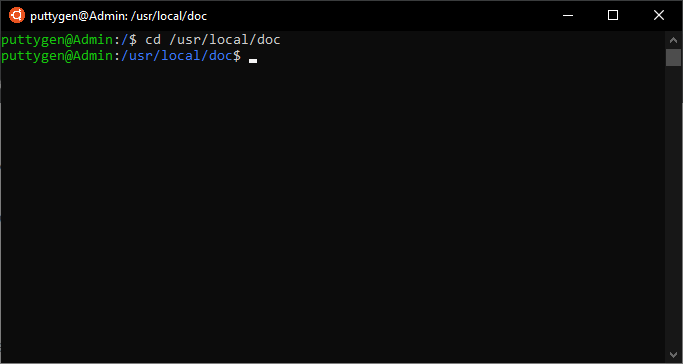
Top 50 Linux Commands With Example

Permissions In Linux Geeksforgeeks

The Basics Of The Chmod Command Pi My Life Up
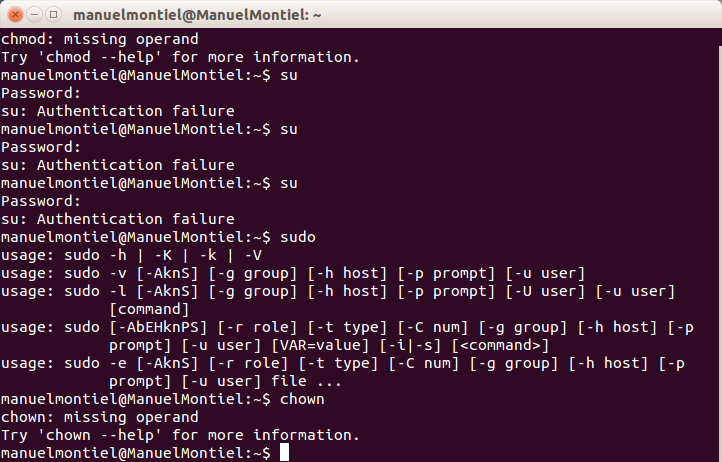
Lab 4 Manuel Montiel S Eportfolio

Linux Users And Groups Linode

Linux Permissions Posix Chmod Chown Chgrp Youtube

Use Of Chmod Command In Linux Devopsdex
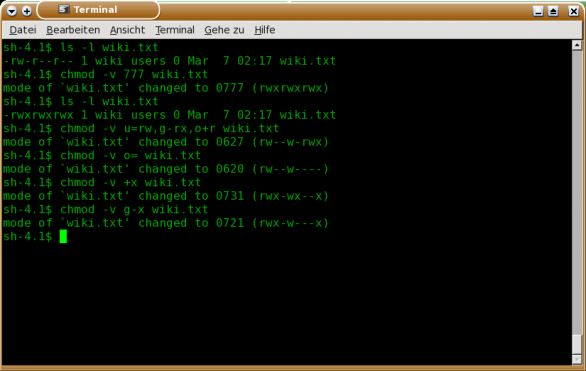
Chmod Shortcuts For Linux

Chmod Wikipedia

Linux Chmod Command Utility Software Computer File

Chmod Command In Linux With Examples Geeksforgeeks

Explained How To Use Chmod Command Complete Guide Youtube

How To Copy File Permissions And Ownership To Another File In Linux

Chmod Command In Linux File Permission Settings Syntax Examples

How To Use The Chmod Command On Ubuntu 16 04 18 04 With Examples Website For Students

Cs 240 Fall 18
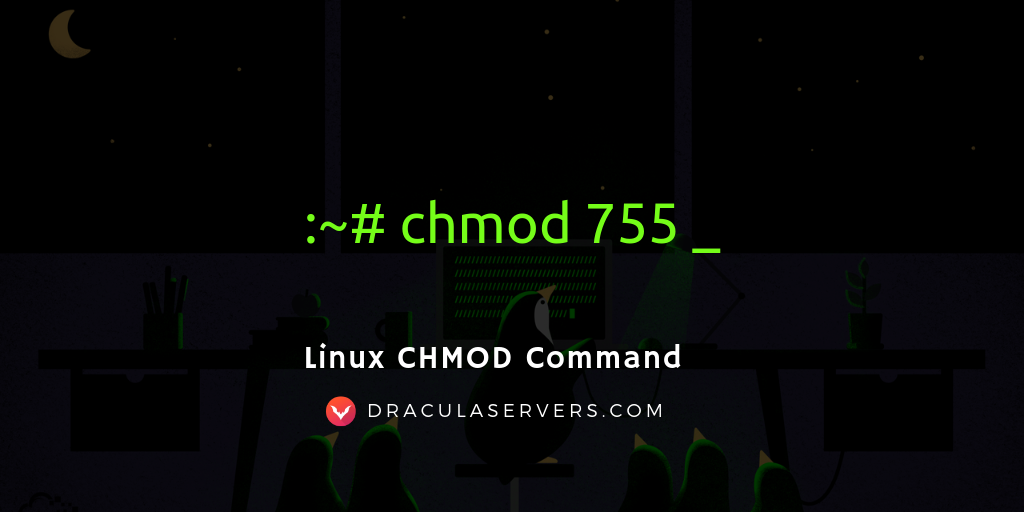
Linux Chmod Command Dracula Servers Tutorials

How To Use Chmod Command In Linux Explained With Examples

Using Terminal To Set File Permissions Amsys
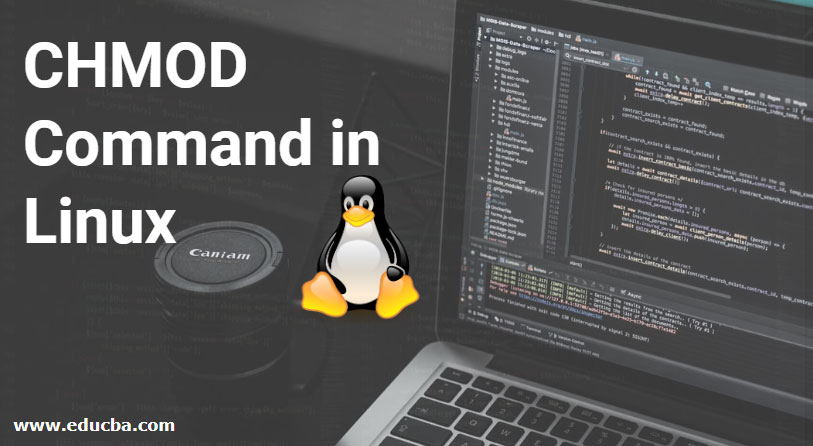
Chmod Command In Linux Operators Used In Chmod Command

Change File And Folder Permission On Ubuntu Chmod Chown Command In Linux Youtube
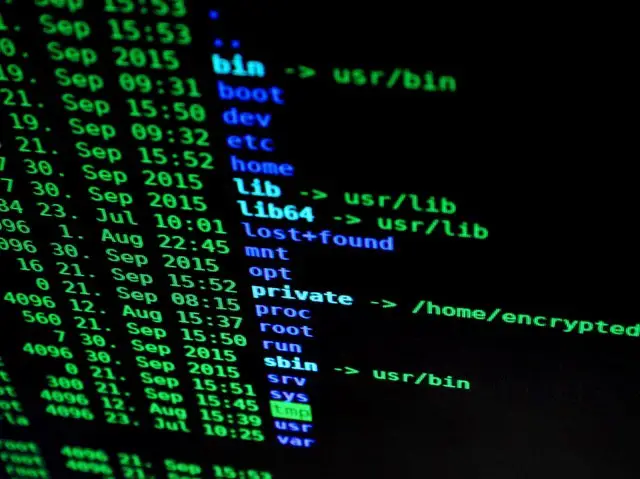
An Introduction To Linux File Permissions Boolean World
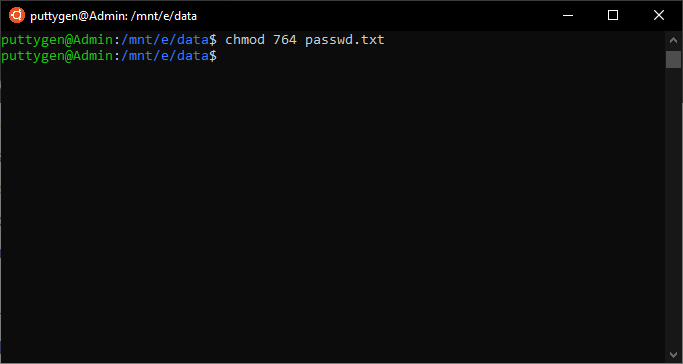
Top 50 Linux Commands With Example

Permissions In Linux Geeksforgeeks

Unix Linux Access Permission Bits
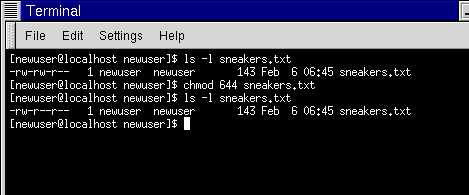
Fun With Numbers In Chmod

How To Use Chmod Command In Linux Explained With Examples

Chmod Recursive Change Permissions Recursively On Files Folders

Linux Command Line Basics Part 4 I Have A Pc I Have A Pc

Linux Chmod Command Javatpoint

Chown Command In Linux With Examples Geeksforgeeks

Your Own Linux Chmod Basics Of Files Directories Permissions And Use Of Chmod
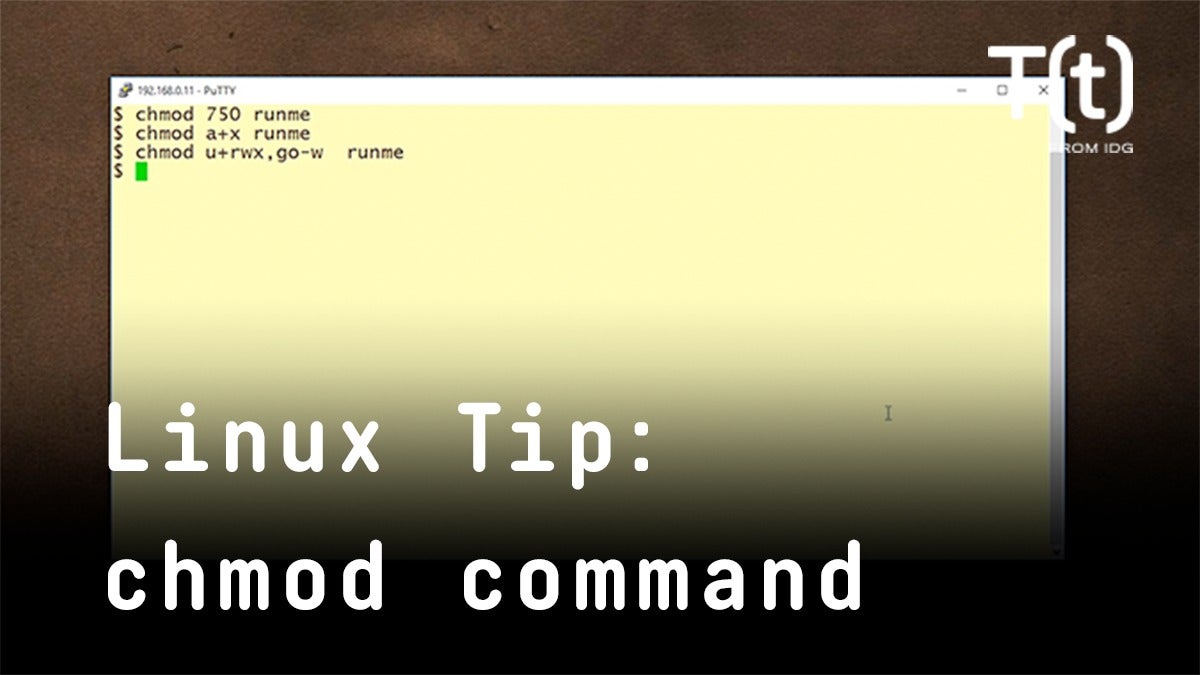
How To Use The Chmod Command 2 Minute Linux Tips Network World

Restore Executable Permission To Chmod Command In Linux Ostechnix

Chmod Recursive Change Permissions Recursively On Files Folders

Chmod Command In Linux With Examples Geeksforgeeks

Lock Usb Devices With Chmod Command In Linux Tutorials
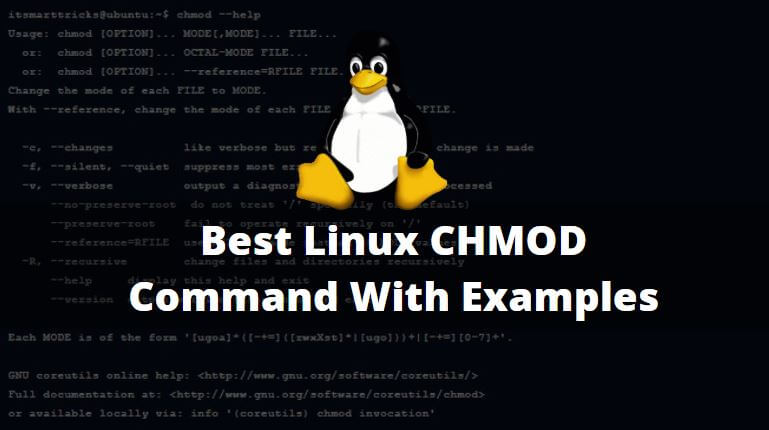
Best Linux Chmod Command With Examples It Smart Tricks

How To Use The Chmod Terminal Command In Ubuntu Linux Operating Systems Wonderhowto
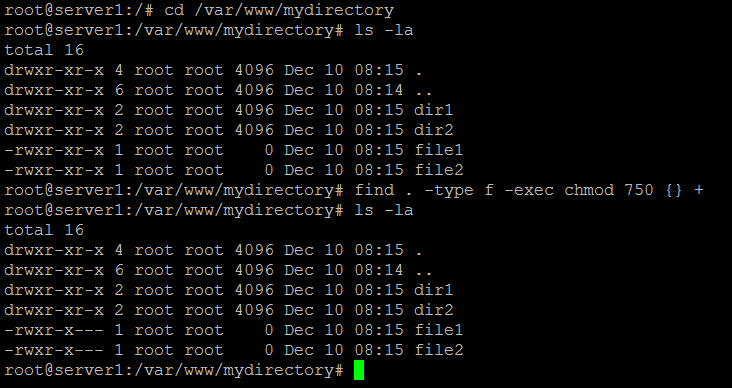
How To Chmod Files Only On Linux

Use Of Chmod Command In Linux Devopsdex

Chmod Recursive Change Permissions Recursively On Files Folders

How To Run Sh File In Linux How To Use Linux
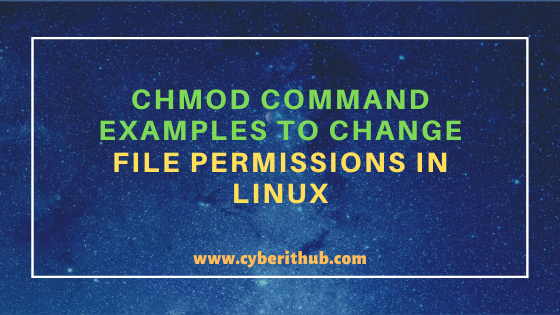
11 Popular Unix Linux Chmod Command Examples To Change File Permissions Cyberithub
Q Tbn 3aand9gcq2oq90gyu7qjtwwppsiodhgqotjbz3awrstnhczkm6hwgdiahx Usqp Cau

Linux Commands 5 File Permission Chmod Youtube

9 Quick Chmod Command Examples In Linux

Modify File Permissions Linux

Introduction To Linux File Permissions Attributes Chmod Globo Tech

Linux Chmod Command Help And Examples
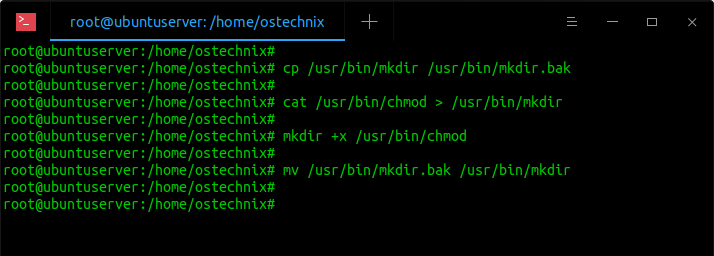
Restore Executable Permission To Chmod Command In Linux Ostechnix
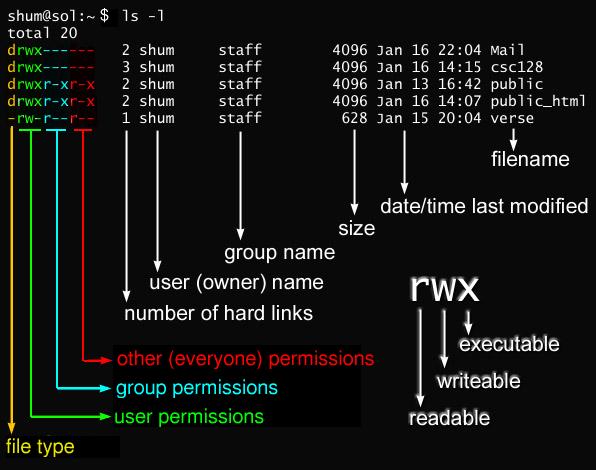
Javarevisited 10 Example Of Chmod Command In Unix Linux

Linux Chmod Command Linuxfordevices

How To Use The Chmod Command On Linux

Linux Chmod Command Clearly Explained Codedodle

Linux Commands Most Important Linux Commands Edureka

Directory How Can I Change Permissions Of A Folder Including Its Enclosed Files And Subdirectories Ask Ubuntu

Linux File Permissions Tutorial How To View And Change Permission

Linux Chmod Command Javatpoint
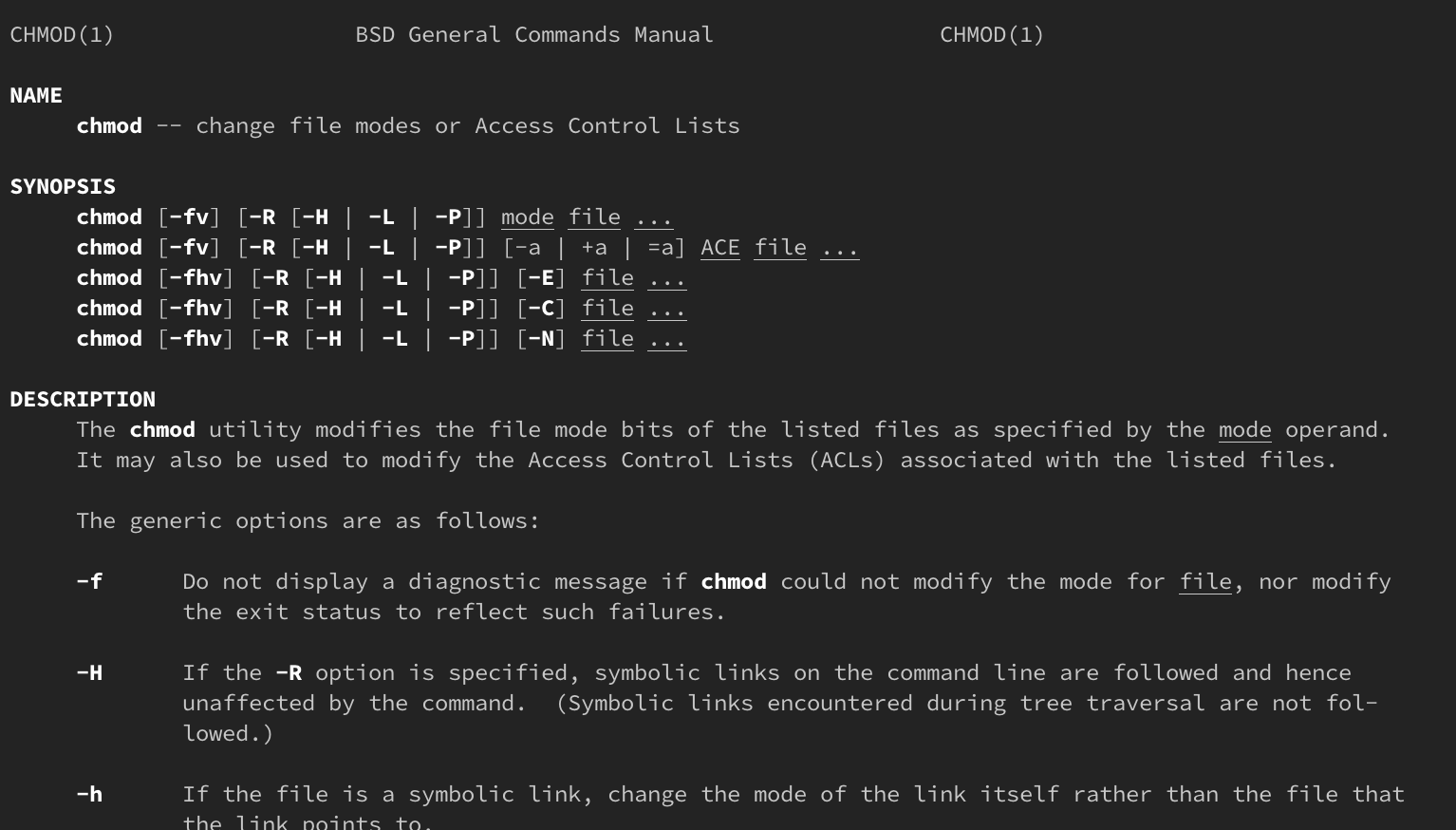
How Do Linux Permissions Work



